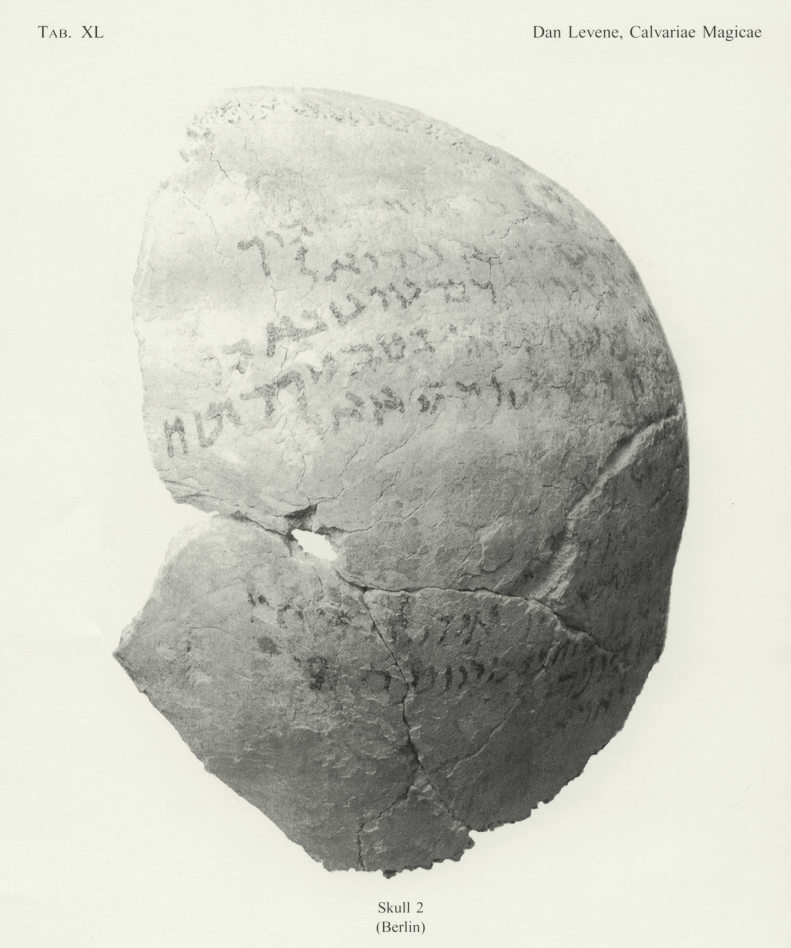Roots of Magic episode
June 28, 2025
Dan Levene on Late-Antique Jewish Magic Bowls, Skulls, and More

Roots of Magic Interview 5
We speak with Dan Levene, one of the leading lights in the study of the late-antique ‘incantation bowls’ (also discussed in Episode 147 of the main SHWEP podcast). We discuss a number of important aspects of the corpus, extended to take in peculiar pieces of evidence such as the five inscribed human skulls which seem to belong to the same cultural world as the bowls, and other outliers.
Topics include:
- the language and scripts of the bowls (all forms of Aramaic, but written in three different alphabetic systems – the Syriac, Jewish-Aramaic square script, and Mandæic),
- the religious identities involved (not always Jewish, and, when clearly Jewish, often a Judaism which defies our efforts to describe it exactly),
- what the evidence of the bowls tells us about the ongoing Rabbinicisation of near-eastern Judaism in late antiquity,
- the kinds of concerns lying behind the cultures which produced the bowls (dealing with everyday problems, including the classics like pregnancy and childbirth, but overwhelmingly in terms of managing demonic powers),
- questions of normativity and its opposite (are the inscribed skulls to be read as ‘forbidden magic’?),
- and much more.
Interview Bio:
Dan Levene was Professor of Semitics and the study of Religion at University of Southampton; he is now associated with the University of Wurzburg.
He is the author/editor of the source-works A Corpus of Magic Bowls: Incantation Texts in Jewish Aramaic from Late Antiquity (Kegan Paul 2003), Jewish Aramaic Curse Texts from Late-Antique Mesopotamia (Brill 2013), and author many more books and articles on the late-antique Jewish magical tradition.
Works Cited in this Episode:
Our episode on the Mandæans with Charles Häberl is here; our incantation-bowls episode with Daniel James Waller is here; there you will find a good general Recommended Reading bibliography on the bowls and related matters.
The story of Saul, Samuel, and the ‘Witch’ of Endor (the canonical instance of necromancy in both Jewish and Christian corpora) can be found at 1 Samuel 28:3-25. Ezra and Nehemia can be consulted in their eponymous book (sometimes divided into two separate books in Bibles, but originally a single chronicle), which recounts the return of some Jews to Jerusalem after the Babylonian conquest of Judæa.
Works by Dan Levene:
- ‘… And by the name of Jesus …’: An Unpublished Magic Bowl in Jewish Aramaic, JSQ, vol. 6, pp. 283–308, 1999.
- ‘A Happy Thought of the Magicians’, the Magical Geṭ, in Shlomo: Studies in Epigraphy, Iconography, History and Archaeology in Honor of Shlomo Moussaieff, R. Deutsch, Ed., Tel Aviv/Jaffa: Archaeological Center Publication, 2003, pp. 175–85 [for sexual metaphors with regard to the Lil-demons].
- Calvariae Magicae: The Berlin, Philadelphia and Moussaieff Skulls (Tab. XXXVII–XLIX), Orientalia, vol. 75, no. 4, pp. 359–79, 2006.
- D. Levene, Ed., Jewish Aramaic Curse Texts from Late Antique Mesopotamia: “May These Curses Go Out and Flee”. Leiden: Brill, 2013.
- The film The Force of Faith can be viewed here.
Themes
Aggressive Magic, Curses, Demons, Judaism, Magic Bowls, Medicine, Necromancy, Rabbinic Judaism, Sasania


Comments
Comments are open to SHWEP members only
Join now to comment
Already a member? Log in here